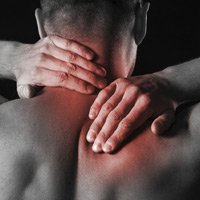Headaches
Nearly one in four Americans experience frequent migraines, and most people experience some type of headache pain in their lifetime. Migraines are characterized by similar, but more severe symptoms than those that are experienced during a typical headache, which often disrupt the sufferer’s ability to perform necessary daily functions, as well as significantly reducing their quality of life.
Recognizing the Symptoms of Headaches and Migraines
Headaches and migraines are characterized by a dull, ongoing pain behind the eyes, around the temples, or at the base of the neck. These symptoms often occur alongside neck pain and stiffness. Migraines can range anywhere from mild to severe, debilitating pain and can sometimes cause light sensitivity and nausea.

The Causes of Migraines and Headache Pain
The most common causes of headaches include poor sleep, dehydration, and blood sugar fluctuations. Migraines frequently occur due to a combination of vascular and nerve changes, which can trigger inflammation and pain.
Headache Relief and Migraine Treatment
How to Prevent Headaches:
- Avoid performing long, respective tasks without frequent breaks.
- Perform light exercise and other stress relief methods.
- Improve your posture.
- Stay hydrated, eat well, and get 6-8 hours of sleep each night.
- Reduce muscle tension in the head through massage or other relaxation techniques
Neck
Neck Pain Symptoms
Common Neck Disorders
Treating Neck Disorders
- Active Release Technique® (ART)
- Stretching
- Heat Therapy
- Soft tissue mobilization
- Kinesiology Taping
- Manual traction
- Postural reeducation and strengthening.
- Stabilization

